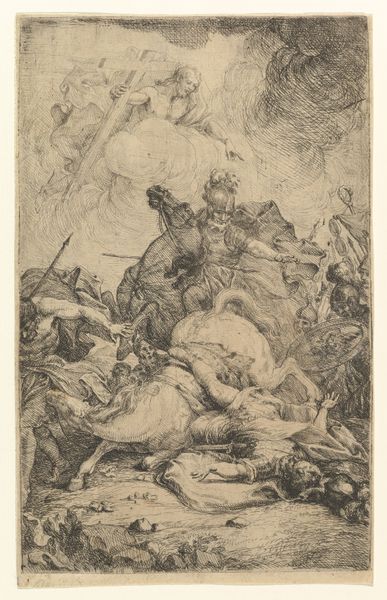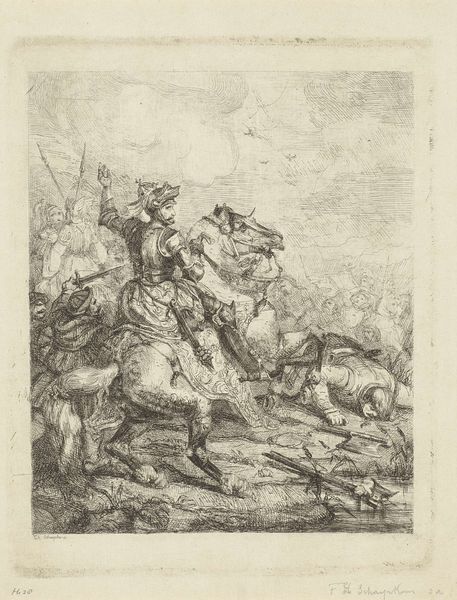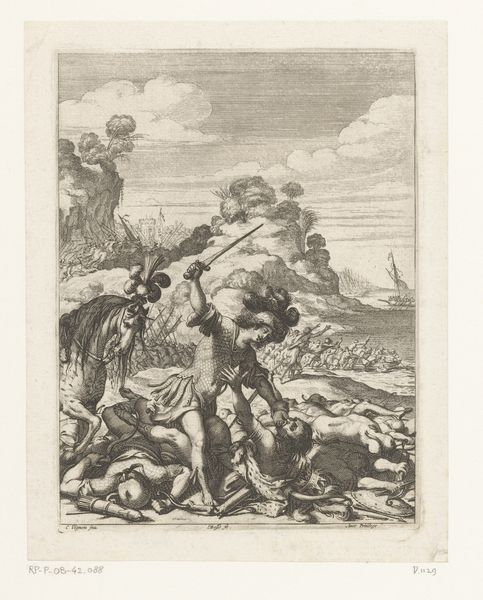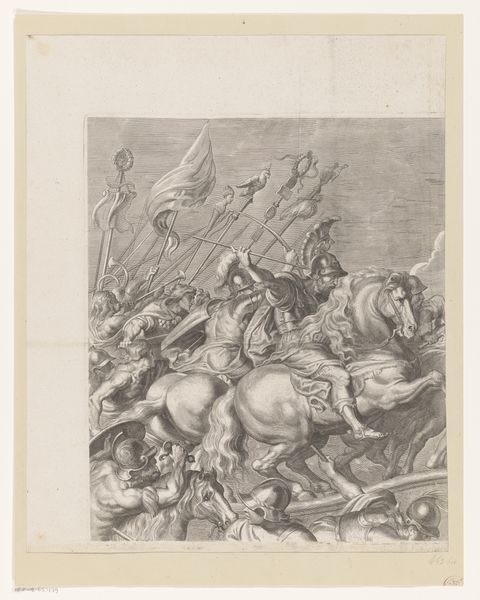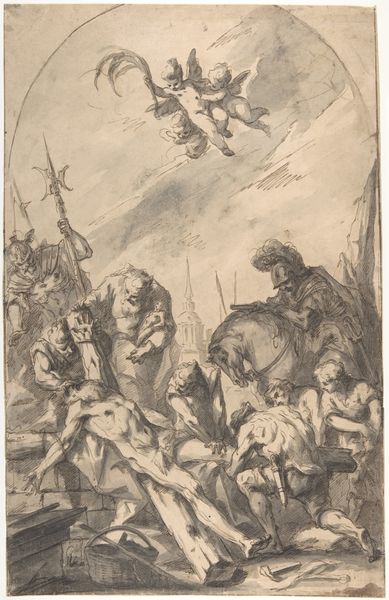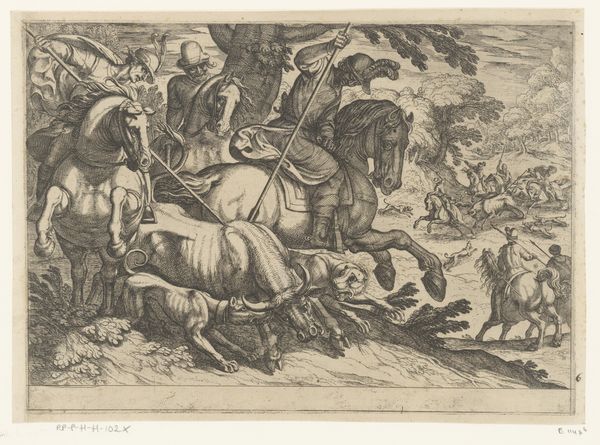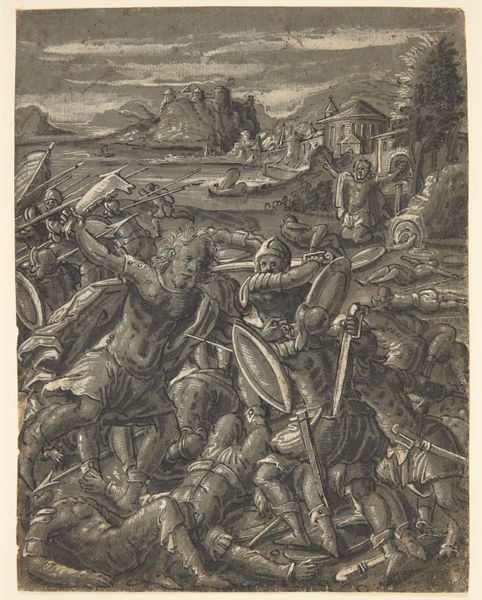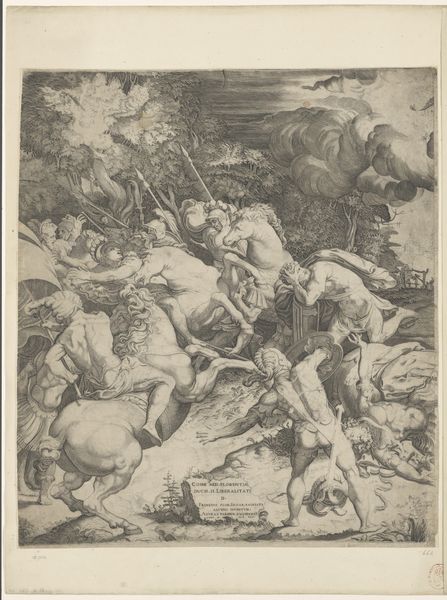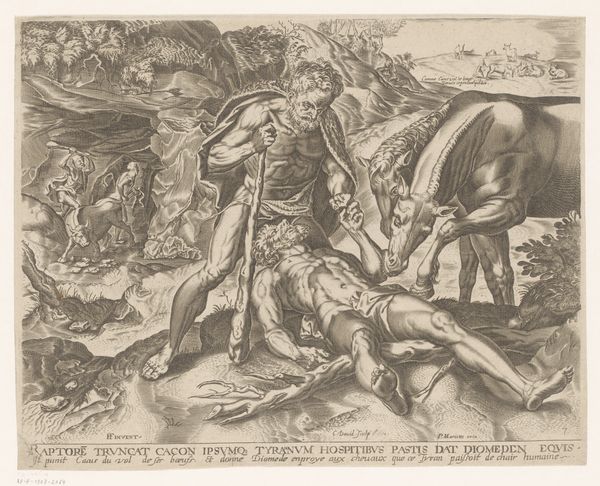
print, engraving
#
ink drawing
#
baroque
# print
#
figuration
#
mythology
#
engraving
Dimensions: height 218 mm, width 184 mm
Copyright: Rijks Museum: Open Domain
Editor: This engraving from 1594 is entitled "Neptunus" and was created by Georg Pecham. The scene shows the god Neptune amidst crashing waves and several horses. There's something almost frantic about it. What's your take on this image? Curator: The choice of subject and its graphic representation point to the complex relationship between art, power, and patronage during that time. The figure of Neptune, god of the seas, wasn't simply decorative. Depicting him served to allude to maritime power and control, an important political theme, particularly in trading nations of the time. Note how Pecham chooses to portray this: Neptune isn't serenely posed; he’s commanding, almost struggling with the chaos of the sea. Editor: So it's not just a mythological scene, it's making a statement about worldly power? Curator: Precisely. The question of who commissioned and would view such a print becomes important. Was it displayed in a public space, intended to inspire awe or to remind people of the strength of the ruling powers? Was it meant for private collection among elites interested in classical themes as allegories for contemporary events? And consider the proliferation of prints at this time – how did printmaking democratize imagery but also serve existing power structures? Editor: That's interesting. I hadn't considered the public's perception of it and the context of how imagery was circulated back then. Now I see that Neptune's struggle might mirror real-world concerns. Curator: Exactly, analyzing the socio-political underpinnings helps to reveal this artwork's layers of meaning, exceeding its aesthetic value. These were tools that had political implications in early-modern society. Editor: Thanks! I will definitely remember to investigate beyond face value when studying art. Curator: A valuable takeaway from exploring art history through socio-political lenses!
Comments
No comments
Be the first to comment and join the conversation on the ultimate creative platform.
